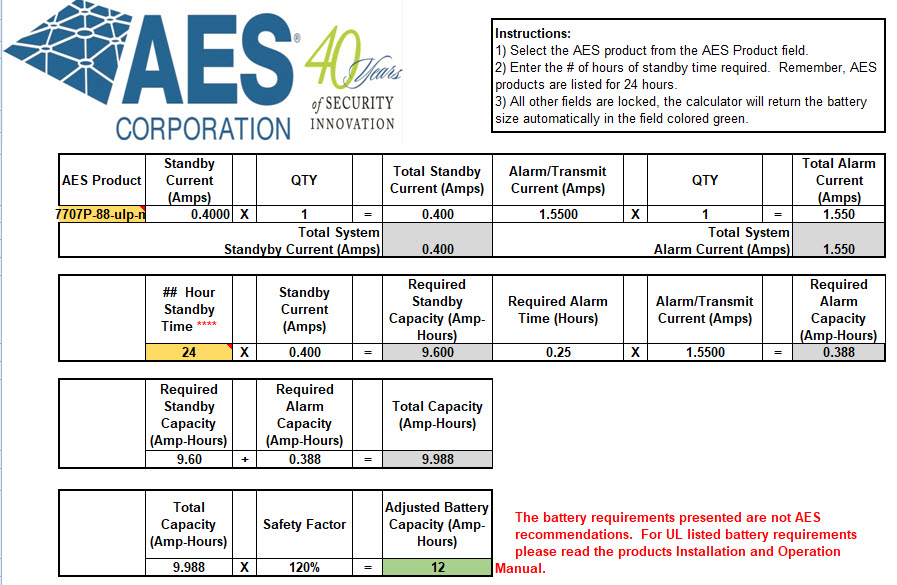How To...
Calculate AES FIRE Radio power consumption.
AES radios require more battery amp/hours than most installers realize. AES provides a spreadsheet file (available below) to help installers select the correct size battery.

Powering AES Radio from Fire Alarm Control Panel
An often overlooked aspect of AES power consumption is when the choice is made to not use a transformer for main AES power and instead draw power directly from the Fire Alarm Control Panel.
When powering the AES radio from the FACP you need to calculate the current draw expected at 24 volts and adjust the FACP batteries to accommodate the AES Fire Radio.
Since all the AES values are based on a 12-volt battery, we can easily deduce that at 24 volts the amp-hour is 1/2 the 12-volt value.
MATH STUFF: Using the same current draw as the data in the above screenshot calculations.
Standby Current (amps) .400 x 12 volts = 4.8 Watts. 4.8 Watts / 24 volts = .200 amps @ 24 volts.
Alarm Transmit Current (amps) 1.55 x 12 = 18.6 Watts. 18.6 Watts / 24 Volts = .775 amps @ 24 volts.
24 Hours standby @ .200 amps = 4.8 amp hour + (Alarm transmit current .775 X .25 (15 minutes) = .193 Amp hour) = 5 Amp Hour @ 24 volts.
AES uses a safety factor of 120%. 5 amp hour x 120% = 6 amp hour.
Even though the AES radio has its own backup battery, the AES Fire Radio will affect the FACP backup battery bank by using 6 Amp hours of the FACP battery bank. Then when the FACP batteries are depleted, the AES radio battery will continue to operate the AES radio. However, the FACP battery bank may no longer be functional.
Failure to account for the AES radio power usage while the main AC power is offline, may lead to premature FACP battery depletion.